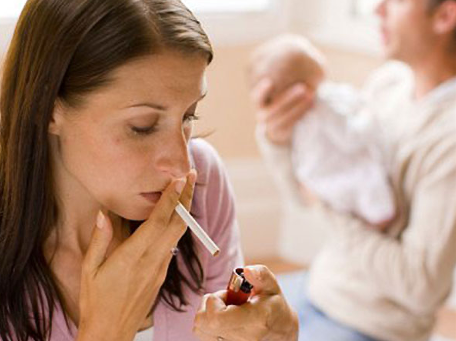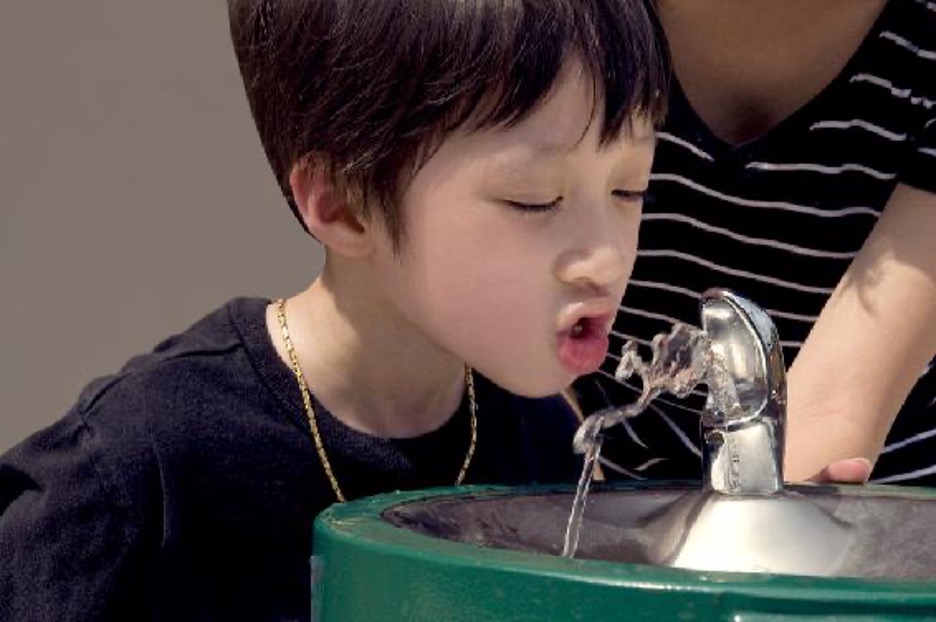Module 3.4 Environmental Health
Learning Objectives
By the end of this module, you should be able to:
- Discuss practices to protect children from environmental hazards.
Environmental Health
Sometimes the threat to health comes from the environment itself. Air quality, chemical hazards, drinking water, mold, and pest management are all topics early learning and childcare providers should be aware of.
Outdoor Air Quality
According to the Government of Canada, “Infants and children are especially susceptible to the health effects of air pollution. Their bodies are still growing, and their lungs are developing. Children also have greater exposure to air pollution because they breathe in more air per kilogram of body weight, and they spend more time being active outdoors. Children with asthma or other respiratory conditions are more likely to be affected.” (Government of Canada, 2016)
Indoor Air Quality
There are so many sources of indoor air pollution in childcare facilities that the air is two to five times more polluted than outdoor air. Common sources of indoor air pollution include combustion sources such as oil, gas, kerosene, coal, wood, and tobacco products; building materials and furnishings such as deteriorated, asbestos-containing insulation, wet or damp carpet, and cabinetry or furniture made of certain pressed wood products; products for household cleaning and maintenance, personal care, or hobbies; central heating and cooling systems and humidification devices; and outdoor sources such as radon, pesticides, and outdoor air pollution.
Environmental Tobacco Smoke & Dangers of E-Cigarettes

Environmental tobacco smoke (ETS), otherwise known as second-hand smoke, is a mixture of the smoke given off by the burning end of a cigarette, or cigar, and the smoke exhaled by smokers. Second-hand smoke contains more than 4,000 substances, several of which are known to cause cancer. Children are particularly vulnerable to the effects of second-hand smoke because they are still developing physically, have higher breathing rates than adults, and have little control over their environment, including where and when the adults in their world choose to smoke. Exposure to second-hand smoke can cause asthma, and places infants and children at increased risk for Sudden Infant Death Syndrome (SIDS), pneumonia, bronchitis, and middle ear infections.
What About E-Cigarettes? The aerosol from e-cigarettes is not harmless. It can contain harmful and potentially harmful chemicals, including nicotine; ultrafine particles that can be inhaled deep into the lungs; flavoring such diacetyl, a chemical linked to a serious lung disease; volatile organic compounds such as benzene, which is found in car exhaust; and heavy metals, such as nickel, tin, and lead.
Scientists are still working to understand more fully the health effects and harmful doses of e-cigarette contents when they are heated and turned into an aerosol, both for active users who inhale from a device and for those who are exposed to the aerosol second-hand. Another risk to consider involves defective e-cigarette batteries that have been known to cause fires and explosions, some of which have resulted in serious injuries. Most of the explosions happened when the e-cigarette batteries were being charged.
Mold
Mold is a fungus that thrives indoors when excessive moisture or water accumulates indoors or when moisture problems remain undiscovered or un-addressed. There are molds that can grow on wood, paper, carpet, and foods. There is no practical way to eliminate all mold and mold spores in the indoor environment. The way to control indoor mold growth is to control moisture.
Mold needs to be controlled in childcare settings to avoid possible health impacts for infants and children, including allergic reactions, asthma, and other respiratory issues.
Integrated Pest Management
Exposure to pests such as cockroaches, rodents, ants, and stinging insects in childcare centers may place children at risk for disease, asthma attacks, bites, and stings. Improper use of pesticides can also place children at risk.
Several factors increase both children’s exposures and their vulnerability to these exposures compared to adults. Children spend more time on the floor, where residues can transfer to skin and be absorbed.
Young children also frequently place their hands and objects in their mouths, resulting in the non-dietary ingestion of pesticides. Children are less developed immunologically, physiologically, and neurologically, and therefore may be more susceptible to the adverse effects of chemicals and toxins.
Integrated Pest Management (IPM) is an effective and environmentally sensitive approach to pest management that relies on a combination of common-sense practices. IPM programs use current, comprehensive information on the life cycles of pests and their interaction with the environment.

Chemical Hazards
A child born today will grow up exposed to more chemicals than a child from any previous generation. Of the 85,000 synthetic chemicals in commerce today, only a small fraction has been tested for toxicity on human health. Children are more vulnerable to toxic chemicals because their bodies are still growing and developing.
Plastics in Childcare Settings
Certain types of plastics contain chemicals such as phthalates, bisphenol A (BPA), polyvinyl chloride (PVC), and polystyrene that may be toxic to children. These plastics can be found in baby bottles, sippy cups, teething rings, pacifiers, and toys. When these items are in a child’s mouth or when they are heated (such as in a microwave), children can be exposed to harmful chemicals that have the potential to mimic or suppress hormones and disrupt normal growth and development. Companies that manufacture in Canada are regulated, but the same standards are not upheld around the world.
Drinking Water
Sources of drinking water can be subject to contamination and require appropriate treatment to remove disease-causing contaminants. Contamination of drinking water supplies can occur in the source water as well as in the distribution system after water treatment has already occurred. There are many sources of water contamination, including naturally occurring chemicals and minerals (for example, arsenic, radon, uranium), local land use practices (fertilizers, pesticides, concentrated feeding operations), manufacturing processes, and sewer overflows or wastewater releases.
The presence of contaminants in water can lead to adverse health effects, including gastrointestinal illness, reproductive problems, and neurological disorders. Young children are at particular risk for exposure to contaminants in drinking water because, pound for pound, they drink more water than adults (including water used to prepare formula), and because their immature body systems are less efficient at detoxification. Exposure to lead in drinking water is a serious health concern, especially for young children and infants since elevated lead levels in children may result in delays in physical or mental development, lower IQ, and even brain damage.
Although blood levels have declined in Canadians with the reduced exposure to lead, drinking water continues to be monitored through flushing and testing. Particularly First Nations communities experience long-term drinking water advisories. As of August 2023, there are 28 long-term drinking water advisories in affect in 26 communities.

The Safe Drinking Water Act Ontario is administered by the Ministry of Environment. Under this Act, all municipal drinking water systems must be approved by the Ministry. Drinking water must meet minimum quality standards. Operators must be trained and certified. Only accredited and licensed laboratories can be used to test drinking water before releasing it to the public.
Pause to Reflect 💭
What are five important things that early learning and childcare programs should remember about environment health to keep children healthy?
Mohawks of the Bay of Quinte which is only 20 minutes from Loyalist College has just been lifted from their long-term water advisory as of April 2023. Research a First Nations community in your area to see the status of their drinking water. Map found here.
It is illegal to smoke with children in your car, in public areas and especially at childcare, schools and early learning environments. There are no legislated bans on smoking in private homes in Canada. How can you share the risks to a family that smokes at home with their children present?
Important Things to Remember
- Maintaining and checking for environmental factors is everyone’s responsibility.
- Being aware of air and water quality, molds, pests, chemicals and plastics and the harm they can cause to yourself and children in the environment.
Resources for Further Exploration
Ontario Safe Drinking Water Act: https://www.ontario.ca/laws/statute/02s32
Drinking Water Advisories: https://www.sac-isc.gc.ca/eng/1538160229321/1538160276874
References
- Government of Canada (2016.) Air quality and children’s health. https://www.canada.ca/en/environment-climate-change/services/air-quality-health-index/children-health.html
- Government of Canada (2023). Mohawks of the Bay of Quinte: ISC extension complete. https://www.sac-isc.gc.ca/eng/1614557083415/1614557104411

